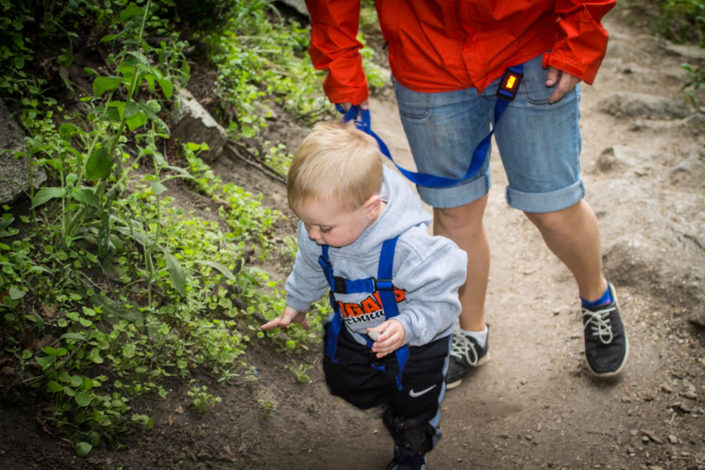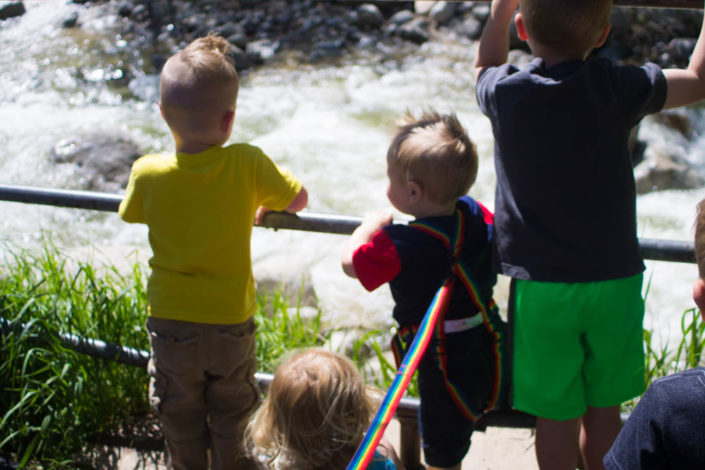3 Trail Safety Tips You Must Know
There are thousands of trail safety tips and sometimes it can be rather daunting to try to remember all of them, but if you can remember these 3 trail safety tips you will minimize risk for your family.
 I have come across parents who read things on the news about accidents that happen while hiking or camping, and are terrified to go out because they aren't as educated about trail safety.
One of my friends said, "I feel like I have to be an expert outdoorsman to be able to go in the mountains safely." This is a common fear that prevents people from enjoying our beautiful earth.
The key here is prevention and preparation. If you can remember these three tips, you will minimize much of the risk to hiking and feel confident taking yourself and your family out for a much needed nature adventure.
I have come across parents who read things on the news about accidents that happen while hiking or camping, and are terrified to go out because they aren't as educated about trail safety.
One of my friends said, "I feel like I have to be an expert outdoorsman to be able to go in the mountains safely." This is a common fear that prevents people from enjoying our beautiful earth.
The key here is prevention and preparation. If you can remember these three tips, you will minimize much of the risk to hiking and feel confident taking yourself and your family out for a much needed nature adventure.
 Additionally, to protect the nature and life around you, stay on the trail as to not damage or destroy that life. Many people use marked trails, but imagine if just as many people went off trail and the damage that would follow! (Read more about Leave No Trace Ethics here.)
Additionally, to protect the nature and life around you, stay on the trail as to not damage or destroy that life. Many people use marked trails, but imagine if just as many people went off trail and the damage that would follow! (Read more about Leave No Trace Ethics here.)

 I have come across parents who read things on the news about accidents that happen while hiking or camping, and are terrified to go out because they aren't as educated about trail safety.
One of my friends said, "I feel like I have to be an expert outdoorsman to be able to go in the mountains safely." This is a common fear that prevents people from enjoying our beautiful earth.
The key here is prevention and preparation. If you can remember these three tips, you will minimize much of the risk to hiking and feel confident taking yourself and your family out for a much needed nature adventure.
I have come across parents who read things on the news about accidents that happen while hiking or camping, and are terrified to go out because they aren't as educated about trail safety.
One of my friends said, "I feel like I have to be an expert outdoorsman to be able to go in the mountains safely." This is a common fear that prevents people from enjoying our beautiful earth.
The key here is prevention and preparation. If you can remember these three tips, you will minimize much of the risk to hiking and feel confident taking yourself and your family out for a much needed nature adventure.
1. Stay on the Trail
The biggest key to trail safety is to simply stay on the trail. The trails are regularly maintained for your protection, as well as for that of the plant and wildlife around you. For example, the trails are kept clear of rocks and other hazards that might lead to injury. If an injury does occur on the trail, it is much easier to find and assist that person than if they were to get injured off-trail. Staying on the trail is your best bet at preventing any injuries or emergencies that could happen. Additionally, to protect the nature and life around you, stay on the trail as to not damage or destroy that life. Many people use marked trails, but imagine if just as many people went off trail and the damage that would follow! (Read more about Leave No Trace Ethics here.)
Additionally, to protect the nature and life around you, stay on the trail as to not damage or destroy that life. Many people use marked trails, but imagine if just as many people went off trail and the damage that would follow! (Read more about Leave No Trace Ethics here.)
"Hiking and riding off an established trail may also cause damage the trail itself. Footprints and tire tracks compress the topsoil and compact the earth underneath. This can change how water flows during a rain and wash out previously safe sections of trail. Boots and wheels can also dislodge rocks that become impediments to other hikers on the trail." -Sunny Sports
2. Tell Someone Where You Are Going, or Go With a Group
Always tell someone where you are going and how long you expect to be gone. If something were to happen and no one knew where you were, emergency help would be a lot slower to find you. Alternatively, go with a group like Hike it Baby or other local groups. And if the solace of going on a quick outing alone sounds delightful, make sure you let someone know where you are going and, thanks to texting, it only takes a second to do.
3. Be Prepared
Keep it simple and think to yourself while you are packing for your trip, "What do I need for today? Where am I going? How long am I going to be gone? What is the weather like?" Use these questions to prepare yourself and whoever is with you. If you are going near a lake or water source you may want some bug spray and an extra set of clothes. Have a toddler or baby? A diaper and wipes are necessary. If you're gone for a couple of hours you may need a lunch. Your clothing is also extremely important. Cater what you are wearing to what the weather is doing while keeping in mind it is a little chillier in the mountains. Additionally, if you are carrying your child in a pack they will not be moving as much as you and will need more layers if it is cold.What the Experts Say About Trail Safety
According to Alex Balish, Owner of Care 1st Training Group, the importance of being prepared cannot be overstated."Having the right equipment is very important for people to be as safe as possible. You have to know where you're going and you also have to know what the weather is like. Make sure you have proper socks proper rain gear, snow gear, sunscreen, winter gear, whatever the season is for everyone in your party."Alex also wishes to state that it is not necessary to bring everything you own on your outing.
"The biggest problem I find is that people just aren't prepared to hike that particular day because they don't have the right gear, enough food and/or water. You have to prepare for the unexpected and then be ready to change your plan if things go wrong. THAT BEING SAID you also need to know that certain thing are not necessary to bring. You don't need everything that you own on a hike when you have a baby just bring the essentials. You will have nature, sticks, rocks, and all that other good stuff that can amuse your child."
Here Are Some Trail Safety Essential Items for any Length of Time:
- Water
- Snacks
- Sunscreen
- First Aid Kit
- Diaper and Wipes (if there's a little one in your party)
Related Content





Comments